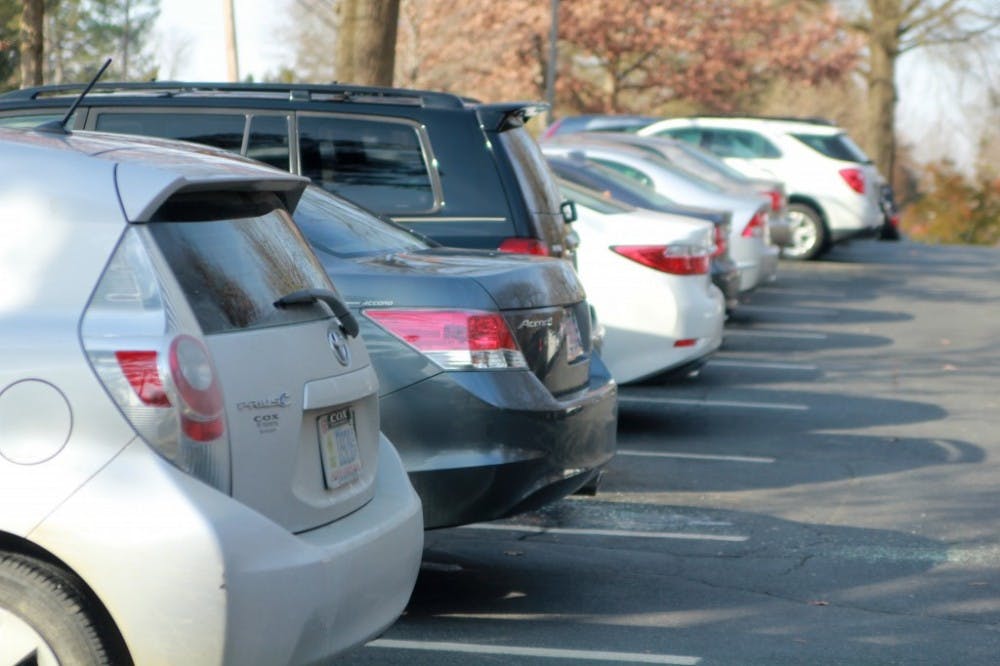On October 18 of last year, Elon University broke ground on its new admissions center that is slated for completion in early 2015. It was an exciting time for the university for it yet again proved that Elon is inching closer to being a top-tier school. In doing so, the school lost a valuable resource that day – parking spaces.
Parking is an invaluable asset for Elon. Seeing as the university’s campus is a closed campus (meaning cars cannot drive directly through the quad) parking lots and spaces become a top priority for the school. Parking is more than just having a certain number of spaces. It’s about accessibility, not only for the university’s students, faculty and staff, but also for prospective students, friends and family.
Elon has had great success courting some of the best and brightest students in the nation. Our campus is nationally recognized as one of the most beautiful in the country. When students come to visit our campus the first thing they focus on is where to park. With more than 11,000 prospective students visiting during the 2012 calendar year, it is obvious that Elon’s current parking lots become saturated during admissions events.
With that being said, Elon also must serve its current students. Other than donors, student’s tuition money is what fuels Elon’s drive to success. Although the campus currently has 4,320 parking spaces available on campus, which is an almost 300 parking space improvement from 2012, the locations and layout of the parking lots are confusing and inconvenient.
A prime example of the challenges facing students when it comes to parking is the alarming lack of “20-minute” parking spaces. These spaces allow students to pull up to buildings such as the Moseley student center to get their mail or pick up a package. Ever since construction began on the new admission center, these spaces have been decimated and students have paid the price – in parking tickets.
The blatant lack of “20-minute” parking spaces combined with over-zealous campus security officers handing out tickets as fast as they can write them add up to be a costly price for students to pay. For $40,000 a year, students should be able to have access to their student center to pick up a package without having to park a mile away from the Mail Center. Additionally, they should not have to fear getting a ticket from the very security force that claims to strive to create partnerships with the Elon community.
Current students are not the only group struggling with the lack of convenient parking on the campus. Elon’s faculty and the hard working staff that keeps the school running on a day-to-day basis are also suffering from the lack of convenient parking on the campus. The awkward locations of some parking lots leave faculty and staff competing with the very students they work with for parking spaces. A parking lot is hardly the appropriate venue for competition.
The central weakness of Elon’s parking plan is the system itself. With more than 17 different permits for their parking lots, the university sets itself up for some unusual parking regulations. Certain permits, such as the common Danieley Center parking permit, only allow students to park on campus during the week after 4 p.m. and on weekends. With the Mail Center closing at 5 p.m., and most classes starting before that time, this is hardly fair for the hundreds of students that reside in that neighborhood.
Elon is not afraid of expanding its campus in order to meet the needs of a modern world. It is truly impressive to see how well the university is able to fundraise, build and continue to push the envelope. While pursuing a more perfect campus, Elon must not forget about its day-to-day role. Parking plays an integral role in the success of the university. The worth of a new admissions building is equal to that of a parking lot. Parking must not be sacrificed in order to build and expand the campus.
Members of the Editorial Board are Nick Foley, Jonathan Black, Katy Canada, Greg Honan and Lauren Phillips.


